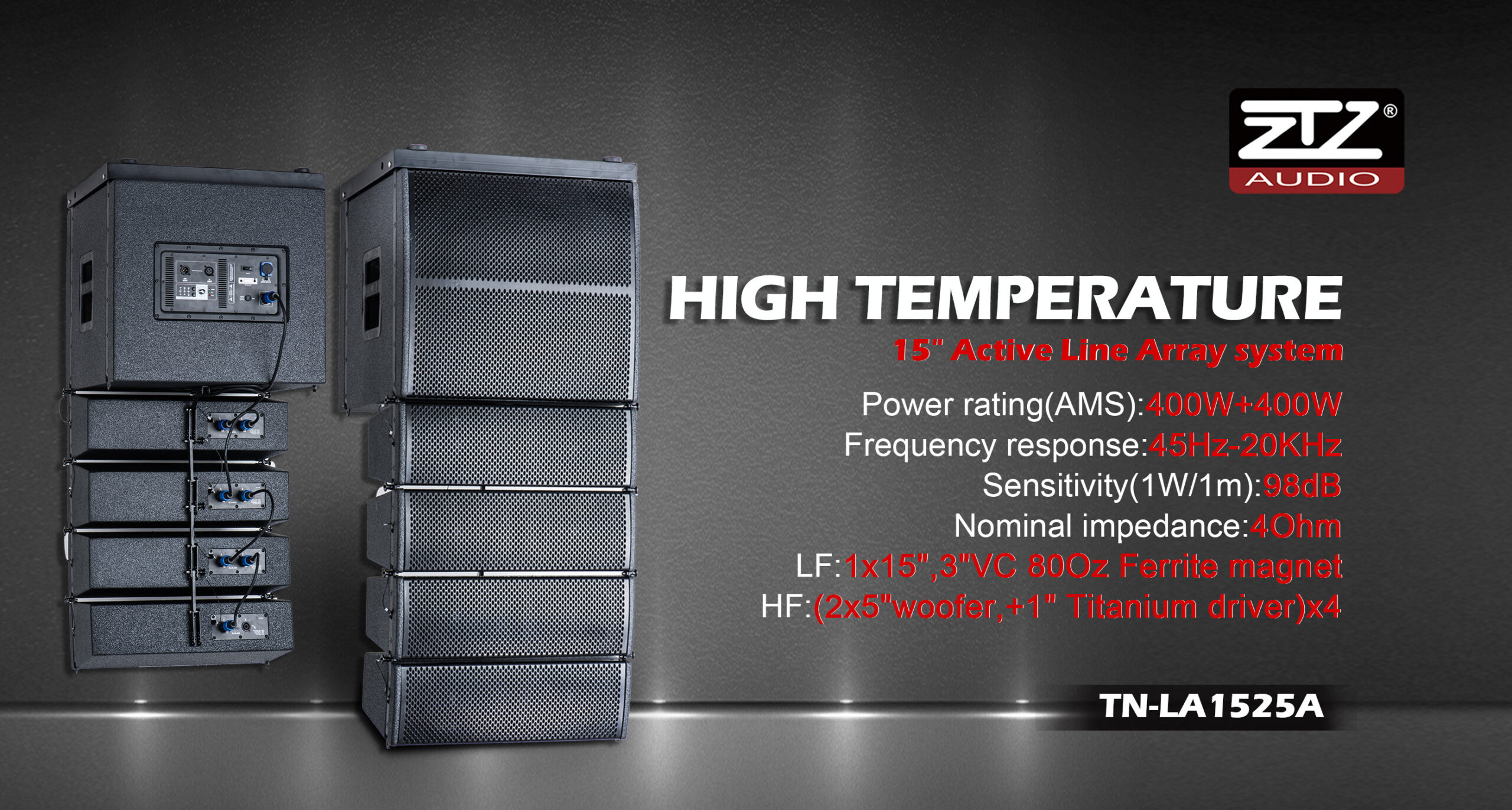Because line array speakers have the characteristics of uniform horizontal coverage, strong vertical directivity, and small sound energy attenuation in the radiation area, they are gradually replacing traditional speaker arrays in many sound reinforcement fields. When amplifying sound at the same volume in the same place, a line array speaker system may be smaller, lighter, and easier to hoist. The line array speakers can also be properly hung, aimed, and bent according to the specific shape of the performance venue, and can provide outstanding sound quality performance for most audiences. The line array speakers launched by various brands of speaker manufacturers have different design principles, drive unit combinations and size structures. Here, the author analyzes typical brand line array speakers from the perspective of waveguide design, hoping to deepen everyone’s understanding of them.

line array is not a line sound source
A line source consists of a string of equally spaced drivers. Its initial application prototype was produced in the 1850s, and it was originally designed to improve speech intelligibility in reverberation halls. The use of line sources is based on their very small vertical pointing angles. If its vertical direction is 0°, it is a cylindrical wave”. Whenever the distance from the sound source doubles, the energy of the cylindrical wave will be attenuated by 3dB, while the energy of the “spherical wave” will be attenuated by 6dB.
There are two necessary conditions for forming a line sound source: first, its linear length is at least 4 times the radiated wavelength, so as to ensure that its directional waveform in the vertical direction is close to a plane wave. Second, contrary to the previous condition, it requires that the distance between the centers of adjacent loudspeaker units be less than half a wavelength. In the 1840s, Olsoni deduced two near-in-phase spherical radiation patterns whose distance is less than 1/4 wavelength. Between 1/4 wavelength and 1/2 wavelength, there will be no side lobe (that is, the sub-maximum value, this interference waveform is usually caused by destructive interference), and this phenomenon will continue until the distance is greater than 1/ 2 wavelength.
In practical application, it means that only a very long line array can conform to the working principle of a line sound source in the low-frequency range, and at the same time, only a very small caliber speaker unit can achieve coupling in the high-frequency range. In practical applications, the playback frequency band of most line arrays that actually conforms to the working principle of line sound sources does not exceed one octave. So a line array can hardly be considered a line source.
Practical work of the line array
Line arrays are characterized by their ability to provide consistent sound pressure coverage from the front to the rear of the auditorium. Its sound pressure level is almost the same from the rear to the front. To understand why, first look at some examples of sound reinforcement systems designed using conventional amplifiers and compression drivers. Loudspeakers used in horizontal arrays are designed to compress their spherical radiation waveform into a pavilion pie shape, such as 60″x40°, 90×40, or other similar designs so that they provide good coverage for the sound reinforcement of the venue. If the directional coverage is small You can get a consistent and uniform sound pressure coverage by aligning the main axis of the speaker’s radiation with the -6dB yuan angle at the back row and the front row. If the height of the hanging point is sufficient, you can fix the position and angle of the speaker , so that the distance from the first row to the horn is half of the distance from the last row to the horn. At this time, the discrete control ability of the horn itself to its radiation angle can balance all these well, so that the front and rear fields can get consistent and uniform sound pressure overlay effect
If architects can build public spaces generally suited to the horn’s radiation characteristics, and the area is small enough, then a single loudspeaker can cover each side of the audience area, eliminating the need for line arrays. Of course, the diversity of the size and shape of the site determines that this is impossible. The sound pressure output of the line array is 18-24dB higher than that of the ordinary single speaker, and its vertical direction can be used to respond to the sound reinforcement of different venues through the curved array, just like the way of properly fixing the position and angle of the traditional simple speaker. Correctly bending a line array delivers the same acoustic power to the same audience area. This means that the closer you are to the offline array, the larger the radiation angle of each speaker module should be, so the spacing angle between the array from top to bottom should also gradually increase. For most venues, arrays are generally shaped like a J-shape for consistent sound pressure coverage from front row to back row
